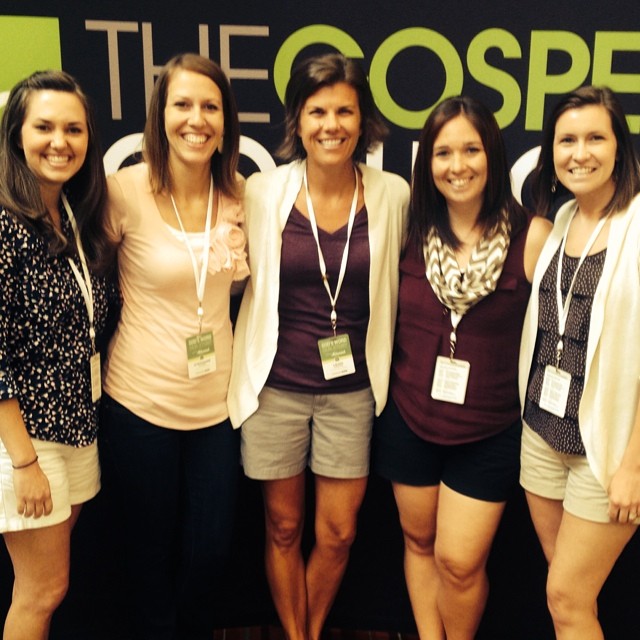Certainly not to the OPC.
The PCUSA last year lost the equivalent of three OPC’s:
Updated statistics made available today by the Presbyterian Church (U.S.A.) Office of the General Assembly (OGA) show a denomination continuing a steep, uninterrupted decline in 2016. The U.S.-based denomination shed 89,893 members in 2016, a decline of 5.7% percent, dropping below 1.5 million members for the first time. A net 191 congregations closed or were dismissed to other denominations, bringing the denominational total to 9,451 congregations.
I’ll do the math. The OPC has roughly 30,000 members (I hear chortles), the PCUSA lost almost 90,000 members. Ergo, the PCUSA lost three OPC’s last year. The thing is, these mainliners didn’t show up in OPC congregations. The OPC lost roughly 250 members last year.
This brings back memories of Orthodox Presbyterian hopes from 1936 to 1967 that members of the PCUSA would awaken (#woke?) to the ways in which liberalism had infected their denomination and lead them to join with the OPC. Here’s an excerpt from Between the Times (for UPCUSA think PCUSA):
In a remarkable display of responding to the moment, the Assembly appointed the Committee on the Confession of 1967 to address the recommendation from its two standing committees. Typically, study committees appointed by the Assembly have a year or several to reflect on the matter and report back to the body. But the Committee on the Confession of 1967 had the task of responding by the end of the Assembly. This explains another unprecedented development – the Moderator’s decision to appoint this committee rather than receiving nominations and casting ballots. In this case, Robert W. Eckardt, the moderator, appointed John Galbraith, Calvin Cummings and Edward Eyres to consider the recommendation from Home Missions and Christian Education. The Committee on the Confession of 1967 ended up following closely the original recommendation from the standing committees. It encouraged the Assembly to reach out to conservatives in the UPCUSA, to remind them of a common heritage, and to recommend the OPC as a “logical choice” for those concerned to maintain historic Presbyterianism. The Committee also followed the basic elements of the program suggested by the standing committees for outreach. To show that the OPC was serious about these measures, the Committee also recommended a resolution, again that followed the standing committees, designed to clarify exactly the kind of church the denomination was: “the Orthodox Presbyterian Church is completely committed to the Bible as the written Word of God, the only infallible rule of faith and practice, and to the Westminster Confession of Faith and Catechisms as faithfully and fully setting forth the teachings of Holy Scripture.” In addition, the Committee recommended that the OPC resolve that it “express its desire to serve those in the United Presbyterian Church in the U.S.A. who wish to continue adherence to the historic Christian faith as summarized in the Westminster Standards.” After some minor editing of the resolution’s language, including changing it to read that the OPC was committed to the Westminster Standards as “faithfully setting forth” (instead of “faithfully and fully”) the teaching of Scripture, the Assembly approved.
One of several curiosities of devoting so much OPC energy to another denomination, and especially a mainline one at that, was that after the first decade or so many Orthodox Presbyterian leaders resigned themselves to the determination of conservatives in the mainline not to leave but to stay. The Presbyterian Guardian had run a number of articles giving reasons for conservatives to exit and affiliate with the OPC. Once that did not happen by 1947, many in the OPC readjusted and conceived of the denomination as a small continuing remnant of conservative Presbyterians. Now, with substantial evidence of liberalism in the UPCUSA, the old hopes for a mass exodus of conservatives into the OPC found life.
The one factor that explains the OPC’s hopefulness was a letter from Edward Kellogg, then a minister at San Diego OPC in Paradise Hills. Only a week before the Assembly – written on the national holiday of July 4th – Kellogg alerted commissioners to rustling among United Presbyterians in California. Bruce Coie, Robert Graham, and he had met a number of conservatives in the UPCUSA who were alarmed over the influence of modernism in their church. These interactions led to a rally held at the Grant Hotel in downtown San Diego where close to three hundred packed a room designed to accommodate 250. Kellogg conceded that the normal channel for his letter was through presbytery but, he explained, “the events that caused me to feel that assembly action was important were too recent for the normal course of procedure.” What Kellogg proposed was the formation of a Presbyterian Covenant akin to the Presbyterian Constitutional Covenant Union that had been the organizational chrysalis for the OPC. The new covenant would enlist Presbyterians from all denominations to stand for the true faith and to oppose the Confession of 1967. It would also involve a pledge from United Presbyterians who entered it to leave the UPCUSA if the denomination adopted the new confessional standard. Kellogg’s letter was not the only impetus for the resolution adopted by the 1965 General Assembly; the standing committee recommendations actually contained more of the substance of the OPC’s response to the Confession of 1967 than did Kellogg’s letter. But the encounter between Orthodox and United Presbyterians in Southern California led some to believe that an outreach to conservative mainline Presbyterians might lead to the kind or realignment for which some had hoped in the 1930s. (93-94)
Of course, a defection to the OPC didn’t happen then and it still isn’t happening. Why?
The OPC has many afflictions, but its bark is much worse than its bite. Most congregations have a degree of autonomy that outsiders likely find perplexing. Ordination exams are rigorous and each presbytery has its own short list of non-negotiables, but the OPC doesn’t require exclusive psalmody, affirming the National Covenant, or sending children to Christian day schools. In fact, what characterizes the OPC, aside from fairly strong adherence to the Confession of Faith and Catechisms, is a commitment to Scripture and a high view of preaching. If you are a Reformed Protestant and want to sit under the ministry of the word, you can reasonably rely on finding that in the OPC.
But if you want a certain “style” of ministry, or if you want to send specific signals about the kind of Calvinist you are, chances are the OPC will not scratch your itch.
So that raises a question, if matters proceed in the PCA such that conservatives there want to find another ecclesial home, where will they go? I have heard some say that the Associate Reformed Presbyterian Church is one option. Being southern apparently matters. On the other side of the coin, if the PCA doesn’t become as progressive as some want it to be, where will the relevant wing of the denomination go? The likely destination is the Evangelical Presbyterian Church.
But don’t forget what happened to The Village Church. If urban sort-of Presbyterianism is your preference, you could wind up in the Reformed Church in America. At that point, the difference between you and the PCUSA would vanish.
If we had a state church, we wouldn’t have this problem opportunity.




